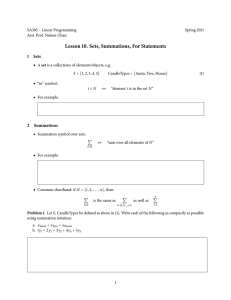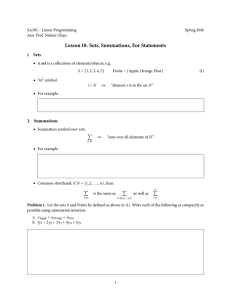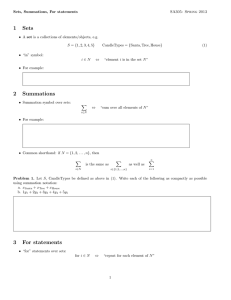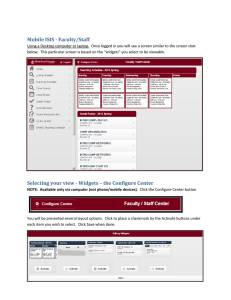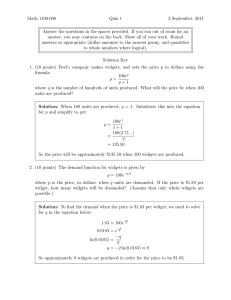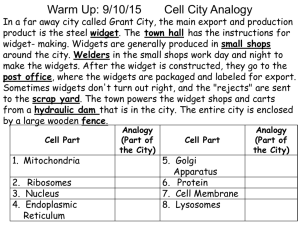sets
advertisement
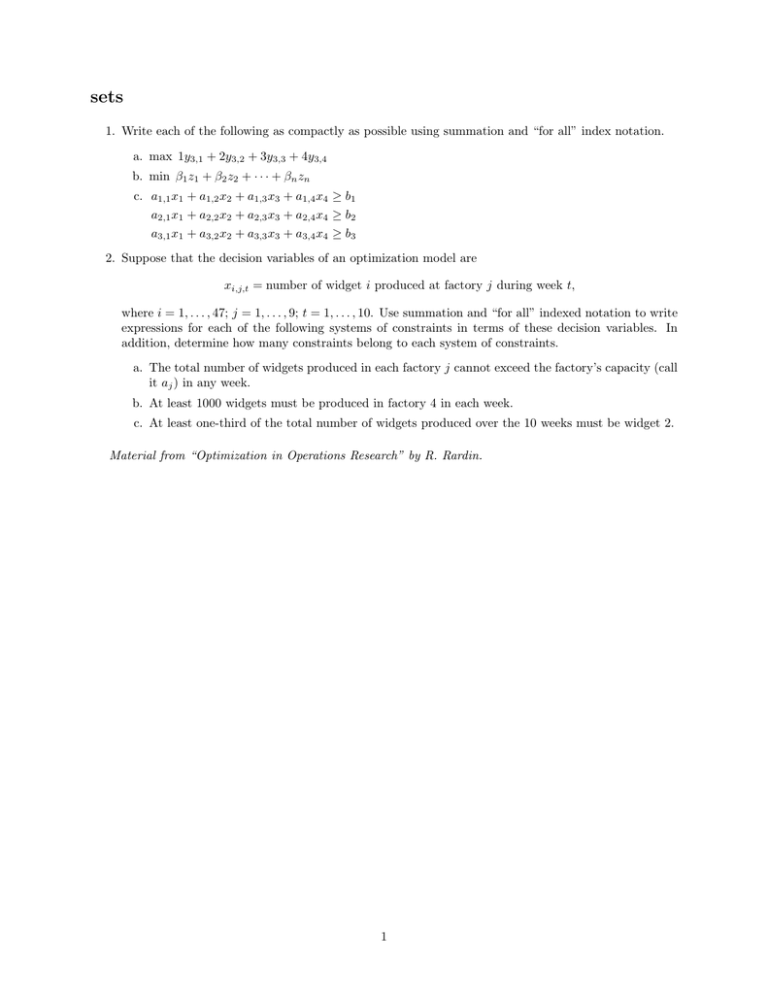
sets 1. Write each of the following as compactly as possible using summation and “for all” index notation. a. max 1y3,1 + 2y3,2 + 3y3,3 + 4y3,4 b. min β1 z1 + β2 z2 + · · · + βn zn c. a1,1 x1 + a1,2 x2 + a1,3 x3 + a1,4 x4 ≥ b1 a2,1 x1 + a2,2 x2 + a2,3 x3 + a2,4 x4 ≥ b2 a3,1 x1 + a3,2 x2 + a3,3 x3 + a3,4 x4 ≥ b3 2. Suppose that the decision variables of an optimization model are xi,j,t = number of widget i produced at factory j during week t, where i = 1, . . . , 47; j = 1, . . . , 9; t = 1, . . . , 10. Use summation and “for all” indexed notation to write expressions for each of the following systems of constraints in terms of these decision variables. In addition, determine how many constraints belong to each system of constraints. a. The total number of widgets produced in each factory j cannot exceed the factory’s capacity (call it aj ) in any week. b. At least 1000 widgets must be produced in factory 4 in each week. c. At least one-third of the total number of widgets produced over the 10 weeks must be widget 2. Material from “Optimization in Operations Research” by R. Rardin. 1


